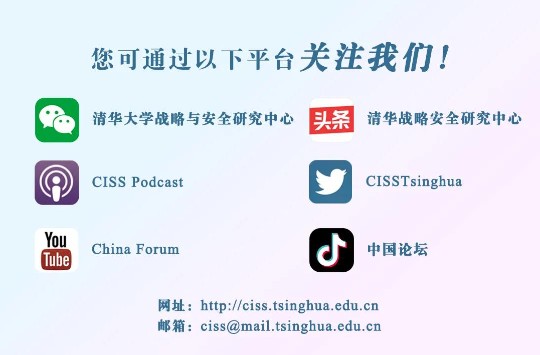中美关税问题是近年来国际经贸关系的核心议题。自2018年起,中美两国就关税展开激烈博弈,贸易摩擦持续升级。2025年4月初,美国总统特朗普在白宫签署两项所谓的“对等关税”行政令,尤其是对华关税税率一路攀升,中美贸易紧张局势进一步加剧,中国则迅速反制,美国关税政策对中美双边经济关系、全球产业链和世界经济格局产生了深远影响。 一 时政热词 1、Section 301 Investigation 301调查 The U.S. Trade Representative’s Section 301 investigation into China’s maritime, logistics, and shipbuilding sectors concluded that Beijing’s policies unfairly dominate global markets, prompting proposed tariffs and port fees to restore American competitiveness. China has repeatedly criticized the U.S. Section 301 investigations, arguing that they represent unilateral actions that not only undermine the multilateral trading system but also disrupt fair competition and global economic stability. 中国多次批评美国301调查,认为其作为单边行动,不仅破坏多边贸易体系,还扰乱公平竞争和全球经济稳定。 (英文摘自2024.09.20 CGTN网站) 2、Bilateral Trade Imbalance 双边贸易失衡 The U.S. bilateral trade imbalance with China, exacerbated by new reciprocal tariffs in April 2025, continues to fuel debates over whether punitive measures can effectively protect American industries without harming consumers. 2025年4月新实施的对等关税加剧了美国与中国的双边贸易失衡,持续引发惩罚性措施能否在不损害消费者利益的情况下有效保护美国产业的争论。 (英文摘自2025.04.09 CNBC网站) China maintains that bilateral trade imbalances reflect global economic complementarities, urging the U.S. to address structural issues through cooperation rather than unilateral tariffs that disrupt mutual benefits. 中国认为双边贸易失衡反映了全球经济的互补性,敦促美国通过合作解决结构性问题,而非采取扰乱互利关系的单边关税。 (英文摘自2025.04.11 Global Times网站) 3、Reciprocity 互惠对等 Reciprocity remains a critical sticking point in U.S.-China trade negotiations, with American officials demanding greater market access and China insisting on equitable treatment for its exports. 互惠对等仍是美中贸易谈判的关键症结,美国官员要求扩大市场准入,而中国坚持对其出口给予公平待遇。 (英文摘自2024.09.05 The Economist网站) China strongly advocates for reciprocity in international trade, stressing that mutual respect and balanced benefits are essential for fostering sustainable and cooperative global economic relations. 中国坚决主张国际贸易互惠互利,强调相互尊重、互利合作是促进全球经济可持续合作的关键。 (英文摘自2024.10.01 Global Times网站) 4、Coercive Economic Measures 强制性经济措施 U.S. coercive economic measures targeting Chinese technology firms, such as Huawei, aim to curb China’s technological ascendancy but risk escalating bilateral tensions and disrupting global innovation networks. 美国针对中国科技企业(如华为)的强制性经济措施旨在遏制中国的技术崛起,但可能加剧双边紧张局势并扰乱全球创新网络。 (英文摘自2024.11.02 Bloomberg网站) China has condemned U.S. coercive economic measures as unilateral overreach, calling for multilateral dialogue to resolve disputes and uphold fair trade practices in critical industries. 中国谴责美国的强制性经济措施为单边过度干预,呼吁通过多边对话解决争端,维护关键行业公平贸易。 (英文摘自2025.04.09 Xinhua网站) 5、Commercial Entry Facilitation商业进入便利化 U.S. negotiators prioritize commercial entry facilitation into Chinese markets, particularly in finance and technology sectors, as a precondition for easing trade restrictions. 美国谈判代表优先考虑为进入中国市场的商业活动提供便利,特别是金融和技术领域,作为放宽贸易限制的前提条件。 (英文摘自2024.09.05 The Economist网站) China insists that commercial entry facilitation for its firms in global markets must be reciprocal, emphasizing fair treatment to strengthen economic cooperation and regional stability. 中国坚持其企业在全球市场的商业准入便利必须互惠对等,强调公平待遇以加强经济合作和区域稳定。 (英文摘自2025.04.11 Global Times网站) 6、Supply Chain Restructuring 供应链重构 Supply chain restructuring accelerates as U.S. firms relocate manufacturing to Mexico and Southeast Asia in response to heightened tariffs and Section 301 measures targeting Chinese industries in April 2025. 为应对美国政府在2025年4月采取的针对中国产业的高额关税和301措施,美国企业加速将制造业向墨西哥和东南亚地区转移,供应链重构步伐加快。 (英文摘自2025.03.04 USA Customs Clearance网站) China is proactively adapting to global supply chain restructuring by enhancing regional trade networks and investing in digital logistics to maintain its pivotal role in international commerce. 中国正积极适应全球供应链重构,加强区域贸易网络,投资数字物流,以保持其在国际贸易中的核心地位。 (英文摘自2025.04.09 Xinhua网站) 二 文化速递 1、Chicago Board of Trade 芝加哥期货交易所 Chicago Board of Trade is one of the most important agricultural products and financial derivatives exchanges in the United States, and it is also an important platform for trade in agricultural products between China and the United States. China has long been a major buyer of American agricultural products, and the trade of soybeans and other agricultural products occupies an important position in Sino-US trade. The trading activities of the Chicago Board of Trade reflect the barometer of Sino-US trade to a certain extent. 芝加哥期货交易所是美国最重要的农产品和金融衍生品交易所之一,也是中美农产品贸易的重要平台。中国长期以来是美国农产品的主要买家,大豆等农产品贸易在中美贸易中占重要地位。芝加哥期货交易所的交易活跃度在一定程度上反映了中美贸易的晴雨表。 2、Phase One Agreement, 2020 第一阶段协议 Phase One Agreement, 2020: Signed in January 2020, it marks a significant milestone in the U.S.-China tariff war. China committed to purchasing an additional $200 billion in U.S. goods over 2020-2021, including agricultural products ($50 billion, such as soybeans, corn, and pork), energy products, and manufactured goods. In return, the U.S. reduced tariffs on some Chinese goods from 15% to 7.5%, and China similarly lowered certain retaliatory tariffs. The agreement is closely tied to the Spring Festival economy, as holiday consumption drives demand for related goods. 第一阶段协议(Phase One Agreement, 2020)于2020年1月签署,是中美关税战的重要里程碑。中国承诺在2020-2021年额外采购2000亿美元美国商品,包括农产品(500亿美元,如大豆、玉米、猪肉)、能源产品和制造业产品。美国则将部分关税从15%降至7.5%,中国也相应降低部分报复性关税。该协议与春节经济密切相关,因节日消费推动相关商品需求。 图片来源:百度百科 撰稿:杨永泽 审核:文晶 钱嘉童
美国贸易代表针对中国海运、物流和造船业的301调查得出结论,中国的政策不公平地主导全球市场,促使美国提出征收关税和港口费以恢复市场竞争力。
(英文摘自2025.04.17 USTR网站)

